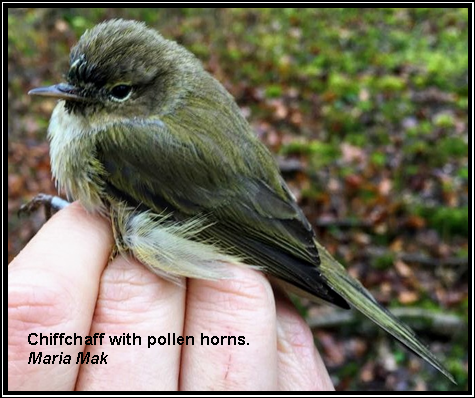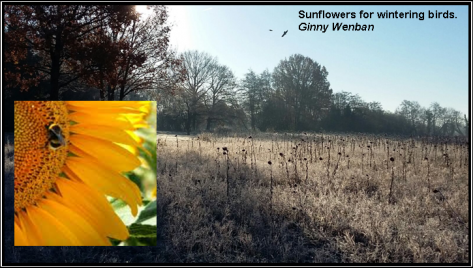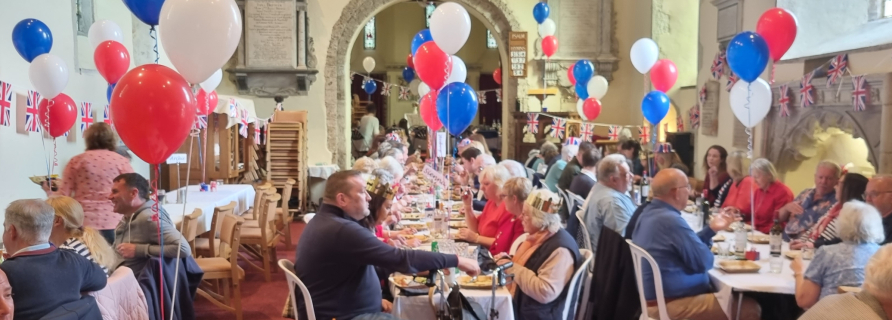Possibly. But as I wrote this for the Lifeline print version on 15th March, I’d just heard that the first chiffchaffs had arrived in Kent – as predicted in last month’s 'Feathers. Tiny, 7g scraps of flesh and feather that have flown from central Africa to make the most of our spring and summer. This one, that was ringed near Luddesdown, had a ‘pollen horn’!

This is the name given to the sticky accumulation of pollen and nectar above the bird’s bill. It gets this after repeatedly searching flowers for nectar to drink and any insects to eat. By analysing the pollen, scientists have identified nineteen different plants, dominated by eucalyptus, prunus and citrus, that the birds are relying on to fuel their migration journeys. With this information, conservation at their migration stopover sites can be helped by encouraging their favoured species of wild, and garden, plants
These birds are taking a gamble though, as we had a further two days of snow just a few days after they had arrived, when they would have been hard pressed to find the tiny insects they feed on, let alone a worm. But it must be worth their while as chiffchaff numbers have been increasing in recent years along with just a few other small birds – blackcaps and long-tailed tits included. But as the latter don’t winter in Africa or around the Mediterranean, it is likely that their numbers will have suffered in the recent weeks of freezing snow. Although you may have daffodils and crocuses already blossoming, warm weather is still some time away, during which all birds will struggle to find enough to eat in our food-impoverished countryside.
Sadly, as I’m writing this blog post, news has just emerged of a 30% drop in populations of farmland birds in France in the last ten years. Not entirely dissimilar to what has happened in the UK. As I’ve written before, enlightened farmers now plant special crops that are left through the winter specifically to support wildlife. Sunflowers often form part of, or even all, the crop. The large, oil-rich seeds are nutritious for both us and birds, and are a favourite of chaffinches and greenfinches in particular, two species that are declining in the UK. They also attract bramblings, close relatives of chaffinches that come here to avoid harsh Scandinavian winters.

This field of sunflowers in nearby Marden has attracted up to a thousand birds at a time this winter – a wonderful spectacle, especially when the local sparrowhawk skips over the hedge and they all take to the air in panic.
It would be an interesting activity for children (or older villagers enjoying an extended childhood) to select some sunflower seeds from their bird feeders and plant them up for the sunflower display this summer. As well as brightening up the village, the giant blooms would attract beneficial insects and the ripe seed heads could be left for the birds.
Meanwhile, especially as yet more snow and cold is forecast for Easter weekend, please keep your garden feeders topped-up while listening out for the first cuckoo. In recent years I have heard my first in East Farleigh round about April 17th. At the moment, cuckoos being satellite-tracked by the British Trust for Ornithology (BTO) are just preparing to cross the Sahara, so they still have a lot of flying to do! You can follow their progress here:
https://www.bto.org/science/migration/tracking-studies/cuckoo-tracking








Make A Comment
Comments (0)